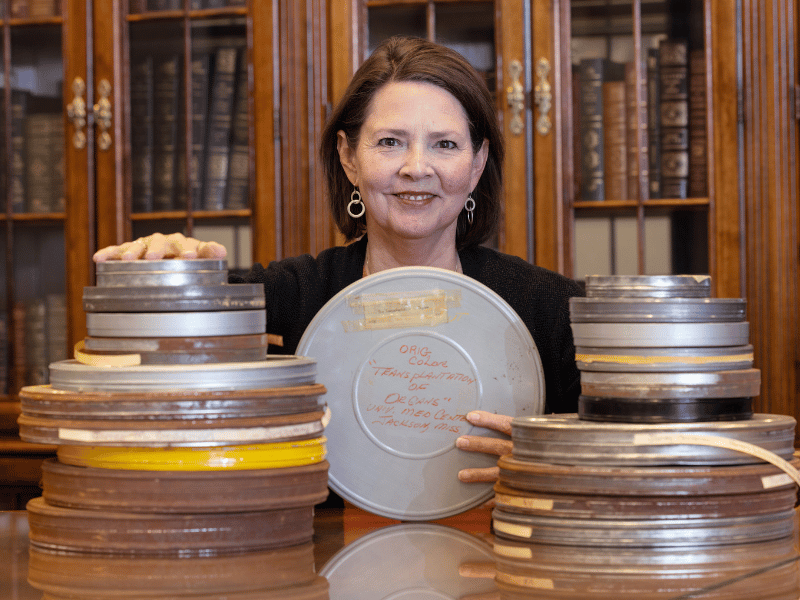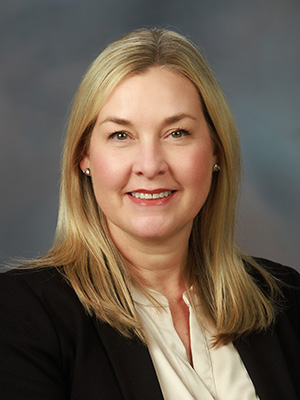For the record: National Archives spurs online medical history project

It may have been the best cup of tea Dr. Ralph Didlake ever had.
It was 1987 and Didlake, now the director of the Center for Bioethics and Medical Humanities at the University of Mississippi Medical Center, was writing a scholarly article about the late, influential surgeon, Dr. Willard Parsons.
After he requested an interview with the surgeon’s widow, Edna Earl Parsons invited Didlake and his wife, Millie, for tea at her home in Vicksburg, and there, to Didlake’s joy, she also let them drink in her husband’s sizable collection of professional papers, photographs and films.

“It was like going to King Tut’s tomb – seeing all these artifacts documenting Dr. Parsons’ surgical career and how he helped build the medical community in Vicksburg,” Didlake said.
The following year, the Dr. Willard Parsons Collection came to UMMC, a donation that has been absorbed into a much larger array of historical components scheduled for preservation, digitization and curation during a multi-year project supported by a fund of $1.09 million, courtesy of the nation’s official record keeper.
“Mississippi Medical History Online: The UMMC Digital Collections Initiative” is the name of this venture, which accepted this financial lift from Congressionally Directed Spending through the National Archives’ National Historical Publications and Records Commission.
The initiative’s goal, broadly speaking, is to preserve the history of medicine in Mississippi. This history will be made available to the public and to scholars alike.
The awarding of the funds was made possible through the efforts of U.S. Sen. Cindy Hyde-Smith of Mississippi.
“As a leader in many areas of the medical field, the University of Mississippi Medical Center needed to create a permanent, accessible home for the historic and groundbreaking achievements taking place in our state,” Sen. Hyde-Smith said.
“It was a pleasure to work with UMMC to secure resources required to digitalize its important collection of Mississippi medical history and to make it available to researchers, historians and the public.”
Kristy Simms, executive director of external affairs at UMMC, worked with the senator’s office to land the funds that will support this undertaking for three years, as of September.

“We are so grateful for Sen. Hyde-Smith’s long-standing support for UMMC and for this project specifically,” Simms said. “Thanks to her leadership, we will be able to capture the historical importance of this institution so that it can be appreciated for generations to come.”
The Center for Bioethics and the Rowland Medical Library are the co-recipients of funding which will bolster the efforts of the Asylum Hill Project and the UMMC Museum of Medical History.
Susan Clark, former library director, and Misti Thornton, associate professor of academic information services and archive librarian, outlined the most significant components requiring attention and are providing oversight of the project.
“For the first six months, the primary goal is to get film preservation underway,” said Lida Gibson, assistant professor of academic information services at UMMC.
“Also a priority: preserving other images, such as photos and slides, which are most vulnerable to deterioration.”
The collection donated by Edna Earl Parsons, who also presented a scrapbook she kept of Willard Parsons’ career, is just one of many carrying the names of prominent Mississippi physicians, most of whom became legends for their pioneering work during their Medical Center years.
The others are the:
- James D. Hardy Collection: papers and photos illuminating the history of surgery and transplantation from the perspective of the UMMC surgeon who led teams that performed the first human lung transplant and the first heart transplant into a human.
- Arthur Guyton Collection: materials related to the world-renowned physiologist who transformed the medical profession’s understanding of heart and blood vessel function and authored the best-selling medical textbook of all time.
- Ira Dwight Hogg Collection: glass slides, books and more dating back to the days when the School of Medicine was located in Oxford and chronicling the contributions of the professor emeritus of anatomy, an authority on the development of cranial nerves and related structures in humans.
- John D. Bower Collection: medical instruments, documents, images and vintage kidney dialysis machines from the career of the architect of dialysis therapy advances and whose efforts led to greater access to this life-saving treatment.
- Peter Blake Slide Collection: 35mm slides from the Medical Center’s unofficial historian and authority on electrocardiography, who chronicled the story of the institution he served from the year it opened, in 1955.
- Julius M. Cruse, Jr. Collection: oral histories of major medical figures – taped on an outdated video format that will be digitized and edited into clips for online access – from interviews conducted by the universally acclaimed authority on immunology.

There is even more preservation work afoot:
- Related to the Asylum Hill Project, more than 1,300 boxes of reports and other papers will be processed, organized, scanned and anonymized – an endeavor aided by the hiring of contract employees. Descendants from across the state and country will have easier access to this information.
- The UMMC Public Document/Image Collection, including institution photos, yearbooks, thesis and dissertation files, bulletins, microfilm, books and more, will complement and provide context for the other, more specific collections.
In addition, the library plans an online repository that will highlight and promote the collections and make them publicly available and easily searchable through the library’s database.
As Gibson said, conserving historical images is the essential first step, and that includes 175,000 feet of teaching films from the Hardy Collection. “They will be preserved and digitized and placed in a format for people to view online,” she said.
Didlake, former professor of surgery and associate vice chancellor for academic affairs at UMMC, will convene a group of physicians to identify the content of the teaching films and determine their relative importance.
“We are looking to winnow this down the most historically significant material to put online,” Gibson said.
The cataloging and archiving of this ocean of venerable material is work that the Medical Center would be doing anyway, Didlake said.
“It’s a large project with a number of moving parts. We’ll have to stay on top of it to get the work done, but the level of funding we received will not only allow the planned preservation projects to be completed at state-of-the-art standards, it will also allow those of us doing the work now to create valuable resources for scholars far into the future,” he said.
Fortunately, it’s just their cup of tea.


